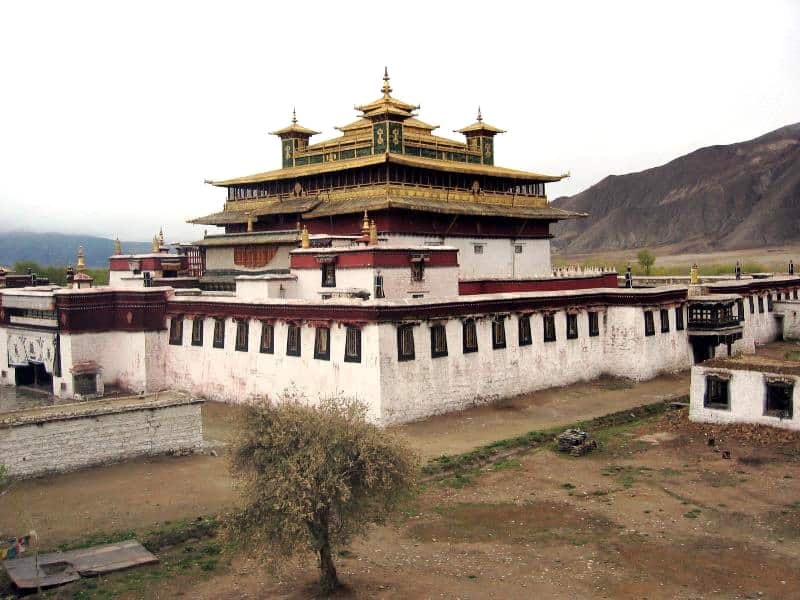Samyé Monastery’s full name is Samyé Migyur Lhundrup Tsug la Khang which translates as the “Inconceivable Unchanging and Spontaneously Perfected Temple”. In 766 C.E., the Dharma-king Tri Songdetsen, inspired by the example of the Indian Emperor Gopala I, commissioned Samyé Monastery to be built on the model of the Bihar monastery of Odantapuri.
In order for this to be accomplished, he relied on the tantric power of Guru Padmasambhava and the pure monastic lineage represented by the abbot Śāntarakśita. The abbot had selected the auspicious location for the building but every time construction reached a certain stage, collapse ensued. At his instigation, King Tri Songdetsen invited Padmasambhava to overcome the obstacles. Padmasambhava, with great compassion, then successfully performed the Vajrakilaya cham dance and employed the use of namkha to clear away obscurations and hindrances.
Samyé became the first Buddhist monastery of the country occupied by and designed to serve native Tibetans. As it was constructed, the first seven Tibetans were ordained as monks, and by the time of its completion in 775 C.E., over three hundred Tibetans were living at Samyé as monks. Śāntarakśita served as the abbot at Samyé for approximately thirteen years.
Architecturally, the monastery is laid out as a giant mandala and represents Buddhist doctrines. The main temple, the Uze Hall, represents the legendary Mount Meru at the center. The emperor ordered that this main temple at Samyé be built in three stories, with each story constructed in a different architectural style to represent the Tibetan, Indian, and Han Chinese Buddhist influences. This hall contains several specific areas. The central Buddha hall, at the core of the entire complex, enshrines the image of Vairocana Buddha. The Sutra hall was designed as a library for study. Circumambulation pathways throughout the buildings allowed the monks and visitors to circumambulate and prostrate before the images of awakened body, speech, and mind.
Samyé monastery consists of a total of an auspicious 108 temples painted with frescoes illustrating Buddhist deities, protectors, and auspicious symbols. Four chörtens painted white, red, black, and green stand at its four corners, representing the four divine dharma guardians. An outer wall encircles the monastery, representing the Cakravāḍa mountains, the edge of the world in traditional Buddhist cosmology.



